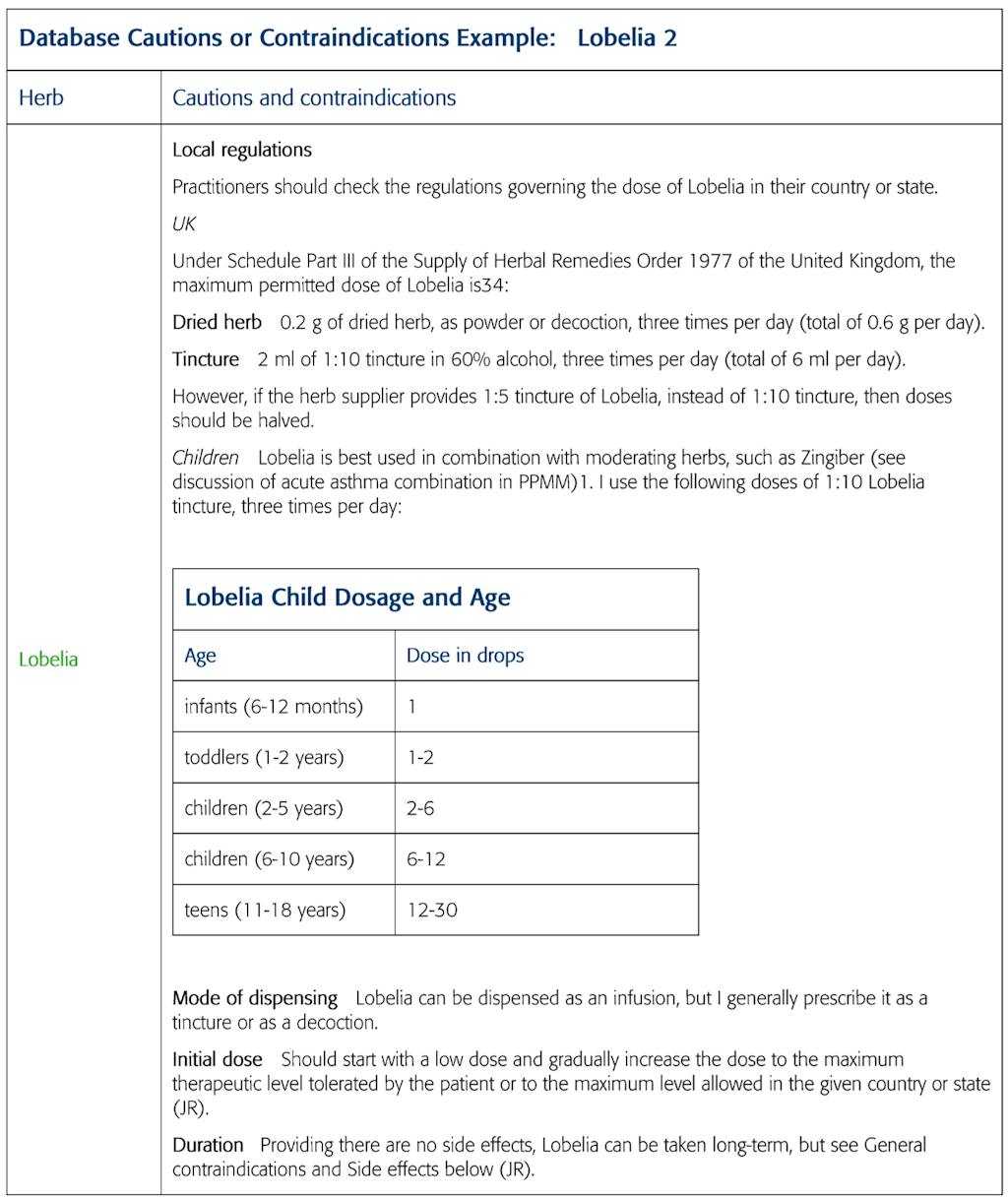Lesson 7: Conversion to grams
In this database, most of the formulas are described as tinctures or liquid extracts, using water and alcohol as solvents, and the relative proportions of the herbs in a combination are shown as ratios. However, if the practitioner prefers to use dried herbs as infusions, decoctions or powders for a particular patient, these tincture ratios can be converted to grams of dried herb.
The combination Thymus 3 for spasmodic cough is used here as an example of the conversion of ratios to grams.
Thymus 3 as tincture

Strength All tinctures are given here are 1:3 in strength, except Lobelia which is 1:10, because it is a strong herb. Ratio In this table, the tinctures of individual herbs are given as ratios (relative proportions to each other in the combination).Thymus 3 as dried herbs
As a useful approximation, to convert the ratios of tinctures in the dosage column of the tincture table above to grams, assume that if the ratio is 1, the individual dose of the dried medicine is 1 g, except for Lobelia.

Strong herbs For example, Lobelia or Convallaria, are taken in lower dosage or as weaker tincture than other herbs. For example, Lobelia is prescribed as a 1:10 tincture, not a 1:3 tincture like most other medicinal plants.
When taken as a dried herb, the maximum recommended daily dose for Lobelia is 0.6 g, rather than 3 g, as with most other medicinal plants.
The practitioner should check the recommended dose for each herb used.
Single dose/daily dose Herb combinations , for example, Thymus 3, are often given 3 times per day. So, if the individual dose of Thymus, Prunus, and Glycyrrhiza is 1 g each, and 0.2 g for Lobelia, the daily dose is 3 g each for Thymus, Prunus, and Lobelia, and 0.6 g for Lobelia.


